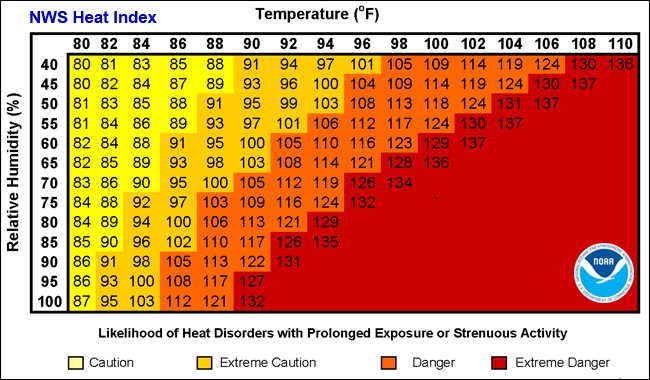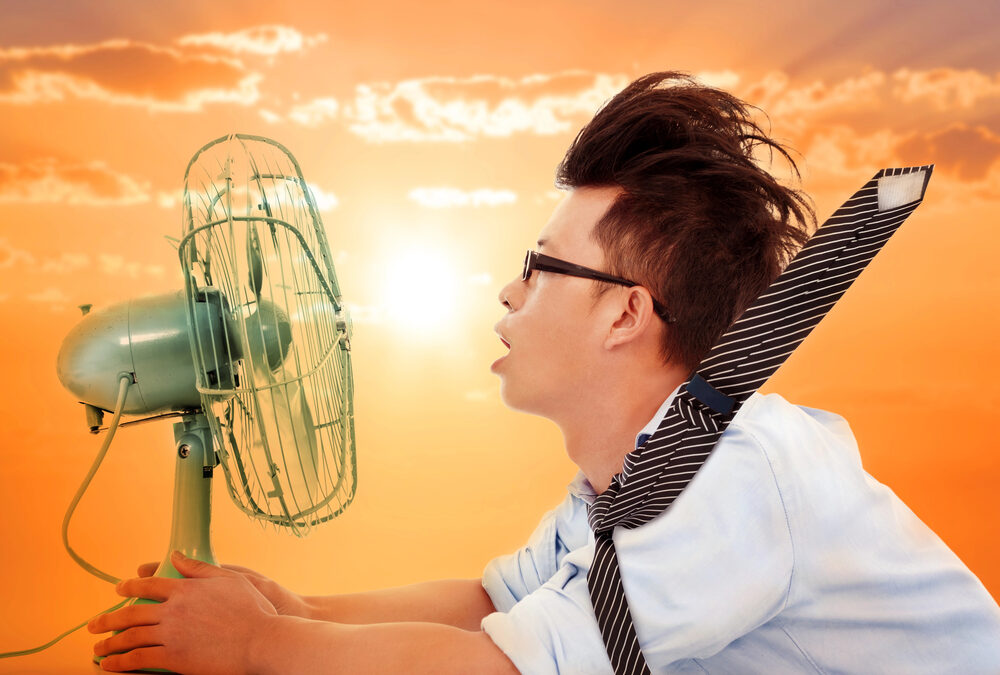Updated May 2025
Our extreme heat toolkit offers tips, tools, and resources to help you stay safe from extreme heat related risks.
As we officially embark on the summer months, the National Weather Service has an important reminder when planning activities at home, at work, and on vacations: Excessive heat is the leading weather-related killer in the United States. An AP analysis found more than 2,300 heat-related deaths occurred in 2023, the highest in 40 years of tracking.
While everyone is at heightened risk in prolonged bouts of extreme heat, some are at greater risk. These include agricultural and other outdoor workers, the elderly, children, athletes, people with chronic medical conditions, and the homeless. We are all more dependent on air conditioned spaces – a power outage or AC breakdown in the middle of an extended heat wave can put people at risk. For those without AC or in emergencies, many states have designated emergency cooling centers.
Here are resources to help you prepare for and stay safe during heatwaves:
- NWS HeatRisk – Map from the National Weather Service identifies potential heat risks over a 7-day forecast. The map is color coded to depict regions of minor, moderate, major or extreme heat-related risks.
- UV Index Search – Tool from the Environmental Protection Agency (EPA) offers a location-based search for the ultraviolet radiation (UV) level on a 1-11+ scale. The Index provides a daily/hourly forecast of the expected UV intensity, along with precautionary tips for each UV level.
- Extreme Heat Safety – A PDF Infographic tip sheet from the Federal Emergency Management Administration (FEMA). For more details and information, see Extreme Heat.
- Protect Yourself from Excessive Ultraviolet (UV) Radiation – safety tips, resources, and FAQs from the National Weather Service.
- How Do I Protect Myself from Ultraviolet (UV) Rays? – Tips from the American Cancer Society.
- Heat Cramps, Exhaustion, Stroke – a tip sheet from the National Weather Service.
- Tips to Stay Safe in the Sun: From Sunscreen to Sunglasses – from the FDA (Food & Drug Administration).
- Sun Safety Facts – Most skin cancers are caused by too much exposure to ultraviolet (UV) light. This CDC page provides safety tips – including tips for employers and for schools.
- All About Sunscreen – The Skin Cancer Foundation talks about why you need it and how it works.
- What to Do (and Avoid) in Extreme Heat – Vox Media offers tips for keeping kids, adults, and the elderly cool and safe, even without air conditioning.
- How Extreme Heat and Humidity Affect Your Health – Mayo Clinic.

The importance of hydration
No matter what your activity level in the summer, staying hydrated is essential. In the heat, your sweat rate is higher while your water and electrolyte loss is greater. This is not just true for those who are exercising — even if you are just sitting around a barbecue, you need to replace your fluids. Water is the best beverage. Avoid alcoholic beverages in the heat – drinks with alcohol contribute to dehydration and can actually be dangerous to your health in extreme heat. Best to skip the poolside cocktails and consume water at regular intervals, whether you feel thirsty or not.
For people who are exercising or playing sports outdoors, hydration is even more essential because you are losing bodily fluids at a faster rate. It’s a good idea to plan your exercising for the early morning or early evening to avoid the heat of the mid-day sun. The folks at the Texas Heart Institute offers hot-weather exercise tips, which recommend the following hydration for workouts of less than 1-1/2 hours:
- About 16 ounces of cool or cold water 1 to 2 hours before you exercise.
- About 16 ounces of cool water or sports drink 15 minutes before you exercise.
- About 5 ounces of cool water every 10 minutes during exercise.
- About 16 ounces of cool or cold water or a sports drink just after exercise.
Get more tips for staying hydrated and check out hydration tips for athletes.
At the workplace
Rising Temperatures Increase Workplace Injuries in US – Not only are many workers at greater risk of heat-related illnesses during heatwaves, a new report shows that they are also at risk of indirect heat-related injuries because “also directly impairs workers’ perceptual, motor and cognitive abilities, increasing the risk of accidents on the job.”
“Examples of such injuries include falling off a ladder on a hot day, or being hit by a vehicle or moving machine at work, as workers’ perception of their surroundings may be impaired on an extreme heat day,” the report noted.
The risk of heat-related injuries varies substantially by industry and occupation, with outdoor workers facing the highest risks. “OSHA identifies several industries with a higher risk of heat injuries or illnesses-mining, quarrying, oil and gas, construction, manufacturing, administrative and support and waste management and remediation services, and transportation and warehousing,” according to the agency.
- Heat – Occupational Safety and Health Administration (OSHA) offers a variety of heat-related resources outlining employer responsibilities, NIOSH recommended heat-related standards, and links to five states with specific heat standards: California, Colorado, Minnesota, Oregon, and Washington.
- Heat Illness Prevention – OSHA campaign educates employers and workers on heat hazards and provides resources to keep workers safe.
- Heat Safety App – With the OSHA-NIOSH Heat Safety Tool, you get vital safety information available whenever and wherever you need it – right on your mobile phone.
- 10 Steps Employers Should Take to Protect Workers this Summer – Employment law attorneys at Fisher Phillips about the progress that OSHA is making in advancing a permanent Heat Rule and suggest steps that employers can take now to keep workers safe in extreme heat.
- How we must adapt our workplaces to cope with extreme heat – The World Economic Forum looks at this global risk from short term to long term approaches.

